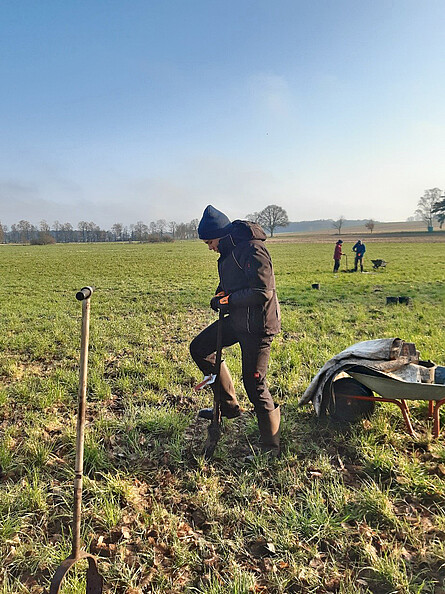
Search for traces of Mesolithic settlement in the source region of the Este, Oste and Wümme rivers
Due to fortunate circumstances, the team led by Stone Age researcher Svea Mahlstedt became aware of an area, shaped by numerous archaeological sites. It is positioned on the edge of the Upper Wümmeniederung in the district of Harburg. On the spot an experienced amateur archaeologist had discovered numerous Mesolithic settlement remains, extending to the foot of the Saalian Moraine “Großer Todtshorn”. Within the flat north German landscape, the moraine with a height of 78m may already be described as a mountain.
In the immediate vicinity are the sources of the rivers Este, Oste and Wümme, which flow north into the Elbe, northwest into the North Sea and west into the Weser. The location on the watershed is particularly interesting in connection with Mesolithic settlement, as rivers are repeatedly discussed as possible communication and migration routes for mobile hunter-gatherers in the forested lowlands and the region can therefore be viewed as a junction.
As part of the “Mesolithic Northwest Germany” project, Svea Mahlstedt's team, in collaboration with the Harburg district's archaeological monument conservation department, conducted an initial two-week field campaign in March to examine the surroundings of the above-mentioned sites for well-preserved areas using systematic drilling. They were able to identify particularly promising areas where an excavation is now being planned for the summer of this year.
